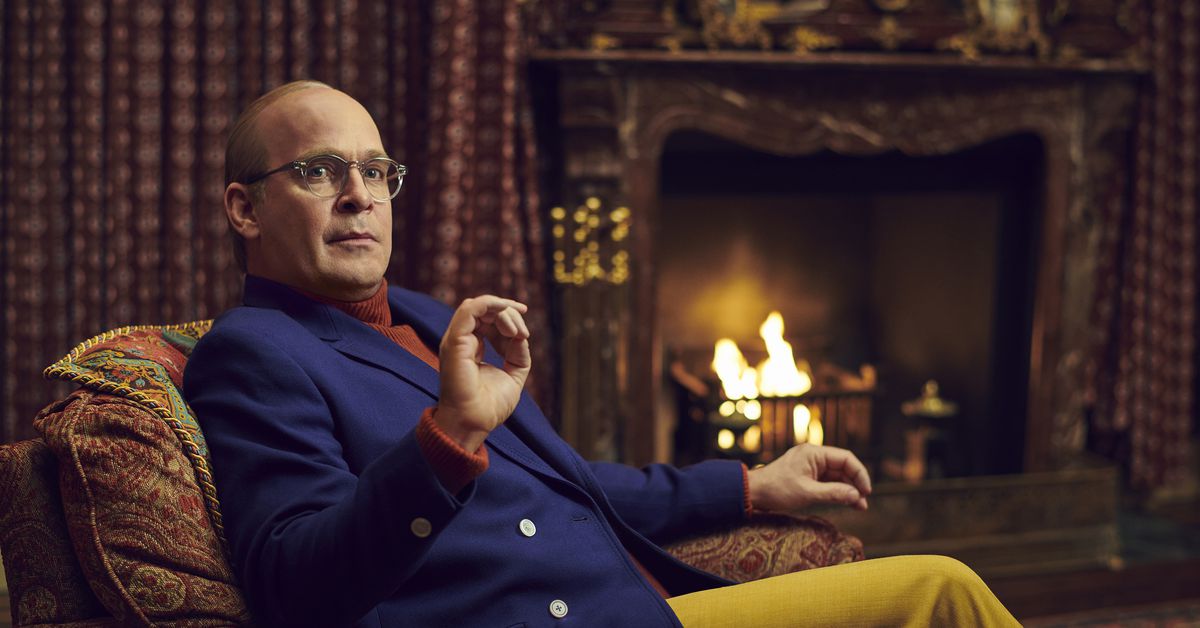It is exhausting, spending so much energy considering the lives and concerns of rich people in so much of our art. But spare a thought for one of the men who introduced us to such obsessions. Truman Capote wasn’t the first writer to build a career off the window he gave his readers into American high society, but — as FX’s Feud: Capote vs. The Swans seeks to illustrate — he was one of the few to blow up his considerable social capital so spectacularly. That’s what makes it such engrossing television: Here is a man who had amassed all the clout in the world, only to light it ablaze while everyone watched. And no one, not even he, is really sure why.
The second season of one of FX’s many anthology dramas from Ryan Murphy (the first, Bette and Joan, premiered an astonishing seven years ago), Feud focuses on notorious celebrity tabloid scuffles, using them to examine the darker impulses that drive fame and our obsession with it. Capote vs. The Swans is a bit harder to sum up than season 1’s “Bette Davis vs. Joan Crawford” hook, but this season’s more immediate and juicy melodrama makes it a little more accessible, even if a viewer finds its subjects more obscure than a pair of Old Hollywood legends.
Capote is likely the name most will be familiar with coming into this season of Feud, simply for his significant literary contributions. While he wrote a number of successful novels, many of which got adapted into film (like Breakfast at Tiffany’s), he skyrocketed to fame with the publication of 1966’s “nonfiction novel” In Cold Blood — arguably the first true-crime hit. Capote vs. The Swans largely takes place in the decade following this success, as the author becomes a fixture of New York high society and ingratiates himself to a cadre of wealthy socialites, the titular Swans.
:no_upscale()/cdn.vox-cdn.com/uploads/chorus_asset/file/25259573/FEUD_302_lock_121823.new.01.Sub.39_83_.jpg)
Image: FX
It doesn’t last. Capote is a writer, “always listening, always recording,” he reminds them, as excerpts from a novel in progress are published: salacious and thinly veiled accounts of the Swans’ tumultuous personal lives, causing them all to vow revenge. But if the conflict is straightforward, Feud’s exploration of it is anything but.
Leaping forward and backward through time, the series — based on Laurence Leamer’s book Capote’s Women: A True Story of Love, Betrayal, and a Swan Song for an Era — constructs a portrait of Capote (Tom Hollander, absolutely disappearing into the role) via mosaic. In one scene he is confidant to women like Babe Paley (Naomi Watts), wife of media tycoon William S. Paley, and Slim Keith (Diane Lane); in the next they are at odds, especially after the publication of his first book excerpt leads to their onetime friend Ann Woodward’s (Demi Moore) death by suicide.
On paper, all of this reads as a prestige soap, lathered on thick. FX’s marketing of Feud doesn’t discourage this; the series is being billed as a story about “The Original Housewives.” The actual execution is far more complicated than that. In its constant flitting about, writer/showrunner Jon Robin Baitz and director Gus Van Sant (who helms most but not all of the series) carefully build a thesis by continually letting its opposing forces define each other, informed by their biases, insecurities, and self-delusion.
:no_upscale()/cdn.vox-cdn.com/uploads/chorus_asset/file/25259581/FEUD_301_CDFA_082323.new.01.Sub.11_copy.jpg)
Image: FX
Capote wants to enjoy all the riches of the jet-setting crowd but can never quite stop seeing himself as an observer no matter how much he participates. He is a man fascinated by the secrets of high society, “the dance of old monies co-mingling with the new, all the rules they have … American royalty and the rituals enshrined therein.” And yet he empathizes with the women he uses for kindling, waxing poetic over their “ballerina pain,” the “gnarled feet” behind their performance of perfection.
The Swans are just as compelling in their performances and in their rage: at Capote’s violation of decorum, in their efforts to reassert it, in the homophobia that comes roaring to the surface once the author is no longer of any use to them. It is a collage of self-loathing, a dinner party hosted on the edge of a knife. Capote vs. The Swans ruminates on many things as it explores its central conflict, some deftly, others less so. But in the era of the untouchably wealthy 1%, it strikes a noteworthy chord — one that hearkens to a time in America where the upper class was careful to not let the public know how much of their wealth was a farce, a tightly choreographed dance that led the public to believe they could be like them if they worked hard enough, even as they built the walls so high that none of them would ever be allowed in.

